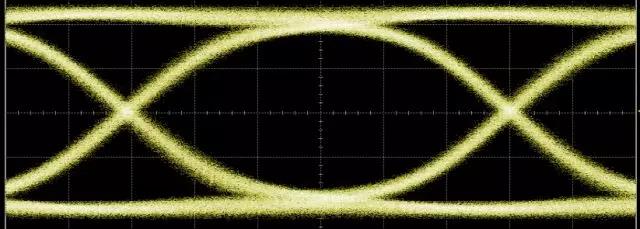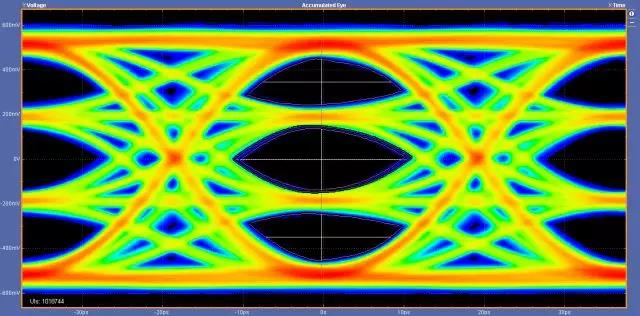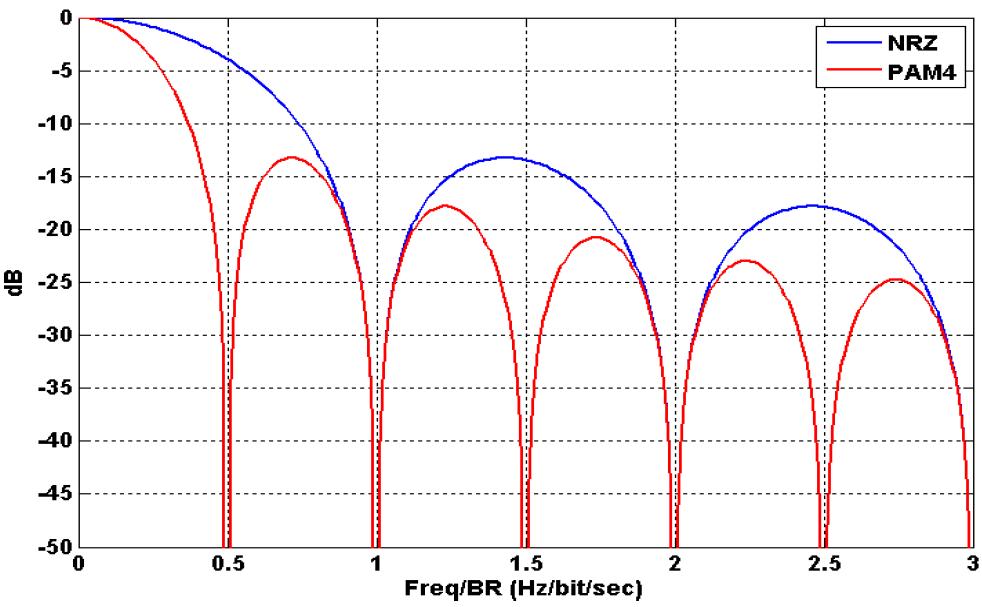In the process of data transmission, signal modulation is indispensable. Whether it is an optical signal or an electrical signal, modulation is required in order to carry data. At present, the mainstream modulation formats commonly used in optical communications are NRZ (Non-Return-to-Zero, binary modulation) and PAM4 (Four-Level Pulse Amplitude Modulation). These are also the two modulation schemes we encounter most frequently. Today, let us lift the veil and take a closer look at the differences between PAM4 and NRZ modulation.
What Is NRZ? (Non-Return-to-Zero, Two-Level Modulation Technology)
NRZ (Non-Return-to-Zero) is a line coding scheme that uses two distinct signal levels to transmit information. In optical communications, this is typically achieved by modulating the light intensity of a source such as a laser. A high level represents binary “1”, while a low level represents binary “0”. Each symbol period carries exactly one bit of information, either 0 or 1. In other words, each symbol (a pulse signal within the minimum signal period) transmits 1bit of data. The term Non-Return-to-Zero means that the signal does not need to return to the zero level after each bit is transmitted. This design conserves bandwidth and improves transmission efficiency. For example, when transmitting the data sequence 00 01 10 11 01 11 00 using NRZ modulation, the encoded signal would appear as follows.

In practical applications, NRZ can be categorized into unipolar NRZ and bipolar NRZ. In unipolar NRZ, only the “1” bit carries a voltage, typically represented by a constant positive level, while “0” is represented by no voltage. The midpoint of each symbol period serves as the sampling time, and the decision threshold is set at half the amplitude level (i.e., 0.5). Specifically, if the received signal value falls between 0.5 and 1, it is determined as a binary 1; if it falls between 0 and 0.5, it is determined as a binary 0.

In contrast, bipolar NRZ works differently. In this scheme, both the “1” and “0” bits are represented by voltage levels: a binary “1” is encoded as a positive voltage, while a binary “0” is encoded as a negative voltage, with both voltages having equal amplitude. The decision threshold is set at zero volts. If the received signal is above zero, it is interpreted as a binary 1; if it is below zero, it is interpreted as a binary 0.

What Is PAM4? (4-Level Pulse Amplitude Modulation)
PAM4, or 4-Level Pulse Amplitude Modulation, as its name suggests, uses four signal levels to transmit information. However, since binary data consists of only 0 and 1, not all four levels can be directly utilized. The solution is to map each of the four signal levels to one of the four possible binary combinations: “00”, “01”, “10” and “11”. In this way, each signal level carries 1bits of information. As a result, every symbol period transmits 2bits, and each symbol (pulse) represents 2bits of data. Compared with NRZ modulation, PAM4 effectively doubles the data rate, enabling higher transmission speeds. For example, when transmitting the data sequence 00 01 10 11 01 11 00 using PAM4 modulation, its encoding looks different from that of NRZ.

Therefore, the implementation of PAM4 is more complex than NRZ, and the decision-making process for signal detection is also more complicated. Due to space limitations, we won’t go into detail here. Despite its drawbacks, PAM4 remains the optimal choice for high-speed communications, such as 400G, 800G, and 1.6T networks.
Eye Diagrams of NRZ and PAM4
For NRZ and PAM4 signals, the eye diagram is an important evaluation metric. Since the underlying encoding methods of NRZ and PAM4 are different, their eye diagrams naturally show significant differences. Let’s take a closer look at where these differences lie.

The eye diagram of an NRZ signal is relatively simple. Since each NRZ symbol uses a single amplitude level to represent either “1” or “0”, the eye diagram appears as a clear rectangular eye-shaped pattern (which is where the name “eye diagram” comes from). The vertical axis of the eye diagram represents signal amplitude, while the horizontal axis represents time. In an ideal scenario, the wider the eye opening, the better. A larger eye opening indicates a more distinct difference between high and low levels, making the signal easier to distinguish. The center of the “eye” corresponds to the optimal sampling point, where decision errors are minimized. However, in real-world transmission channels, factors such as attenuation and noise cause the “eye” to partially close, degrading signal quality. As a result, for long-distance NRZ signal transmission, various techniques are employed to mitigate the effects of loss and noise interference.

The eye diagram of a PAM4 signal is more complex. Since PAM4 has four amplitude levels, each corresponding to a different bit combination, it produces three “eye”(not four). These three eyes are vertically stacked, with relatively small spacing between adjacent eyes. Compared with the NRZ eye diagram, each PAM4 eye opening is only about one-third the size of the NRZ eye opening. This means that PAM4 signals are more susceptible to noise and interference than NRZ signals. For example, under the same noise conditions, the eyes in a PAM4 diagram close more quickly than those in an NRZ diagram, which imposes stricter requirements on signal transmission and reception.
Power Spectral Density of NRZ and PAM4
At 56 Gbps, the Nyquist frequency required for PAM4 is half of that required for NRZ.

Having half the Nyquist frequency brings several advantages, including:
- Doubling the data density.
- Achieving higher resolution with the same oversampling rate, by distributing the same total noise power over a wider frequency range, thereby reducing noise power within the bandwidth.
However, there are also some drawbacks:
- The amplitude of a PAM4 signal is only one-third that of an NRZ signal, resulting in a lower signal-to-noise ratio (SNR).
- Because the voltage levels in a PAM4 signal are more closely spaced, PAM4 is more susceptible to noise.
Comparison of Advantages and Disadvantages of NRZ and PAM4
| Advantage | Disadvantage | ||
| NRZ | PAM4 | NRZ | PAM4 |
| Simple implementation | High transmission rate | Low transmission rate | Complex implementation |
| High signal-to-noise ratio | High power spectral density | Low power spectral density | Low signal-to-noise ratio |
| Low cost of use | High bandwidth utilization | Low bandwidth utilization | High cost of use |
| Signal judgment is easy | Signal judgment is complex | ||
| Low power consumption | High hardware requirements | ||
| High power consumption | |||
Conclusion
The choice between NRZ and PAM4 depends on factors such as data rate, transmission distance, cost, and power consumption. Driven by the market demand for high-speed and low-latency communications, NRZ can no longer meet the requirements, while PAM4 is ushering in a new era for optical communication. The future of communications will undoubtedly be dominated by high data rates.
- PREV: Understanding the Digital Diagnostic Monitoring (DDM)
- NEXT: Null








